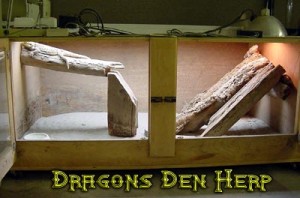Bearded Dragon Caresheet
Bearded Dragon Care 2023
Juvenile and sub-adult Bearded Dragons can be housed in medium-sized enclosures. We recommend a size of 20-30 gallon “Breeder” tanks for juveniles and 40 gallon “Breeder” tanks for sub-adults and adults. When introducing your dragon to a new home, it’s best to have very few cage furnishings. A basking area and a shallow water dish are all that is needed. Once the dragon has started hunting crickets and eating, you can add other items to the cage, but remember: Less Is Best.
Heating and Lighting
Bearded Dragons need 2 types of lighting: A basking light, to provide heat, should be placed at one end of the cage, and should be shining directly onto the basking spot. It is very important to use a thermometer and make sure the hottest spot (the spot directly under the basking light) reaches a SURFACE TEMPERATURE of around 110 degrees. Use a piece of wood, or other structure, so the dragon can climb up near the light to get warmer as needed. An additional thermometer should be placed at ground level, on the cool side of the cage (this can be a stick-on thermometer, stuck to the inside of the cage). The cool side should not exceed 85 degrees. In addition to a basking light, your dragon will need a UVB light. This should be a fluorescent tube that spans the entire length of the cage. We recommend the Reptisun 10.0 tubes made by ZooMed. The basking light can be any bulb that provides the proper temperature. The UVB light should be on for 14 hours every day. The Basking Light should stay on for 8-10 hours daily. Use a timer to turn the lights on and off at the same time each day. You will need a separate timer for each light.
*We DO NOT recommend using any bulb that is said to provide UVB and Heat together.
Feeding
Bearded Dragons should be fed live feeder insects every day. Allow the dragon to warm up, for a couple of hours, before offering food. Our preferred food is Crickets, because they are readily available from pet shops, and cricket breeders, in various sizes. The general rule for cricket size is: The crickets should be about as long as the space between the dragon’s eyes. In addition to crickets, you can offer your dragon Superworms, Horned Worms, Dubia Roaches, and a variety of other commercially available feeder insects, ON OCCASION. Bearded Dragons will also enjoy various dark, leafy greens like kale, collards, turnip tops, dandelion greens, etc., and a small amount of these, left in the cage, will be eaten by the dragon, and will also be nibbled-on by any crickets that have not been eaten. Any uneaten food items should be removed before the lights go off at the end of the day.
*NEVER feed wild caught bugs to your dragon as this can often result in a quick death due to pesticide exposure, or natural toxins.
Here is a good example of how to house adult Bearded Dragons: There are 2 animals visible in this photo; one on the basking site (R) and another on the perch (L) directly beneath the UVB light. It is very important to make sure that your Bearded Dragon has access to a basking area that has a SURFACE TEMPERATURE of 105 – 110 degrees F. It is equally important to provide exposure to UVB light. I recommend Zoo Med’s Reptisun 10.0 florescent tubes (in white fixture visible on top of cage) extending the full length of the enclosure. Make sure your dragons can get to within 8″-10″ of the UV tubes for best results.
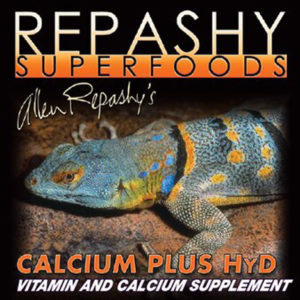
I have been using Calcium Plus for years with great results. Available at repashy.com
.
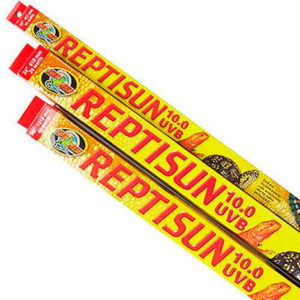
Reptisun 10.0 by ZooMed. Use a tube that extends the full length of your enclosure.
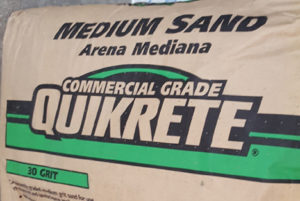
We use 30 Grit sand for Bearded Dragon substrate. Available at Lowe’s or Home depot
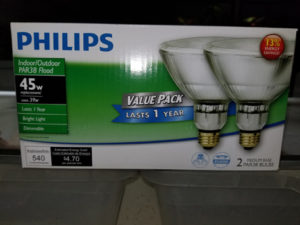
Our Basking Lights:
OUTDOOR Flood in appropriate wattage to provide a SURFACE Temp of 105-110F
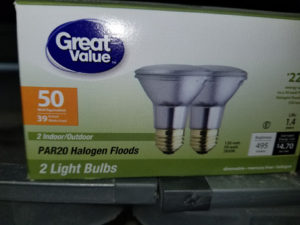
Use smaller diameter “PAR 20” size for smaller cages or shorter distance to basking area


